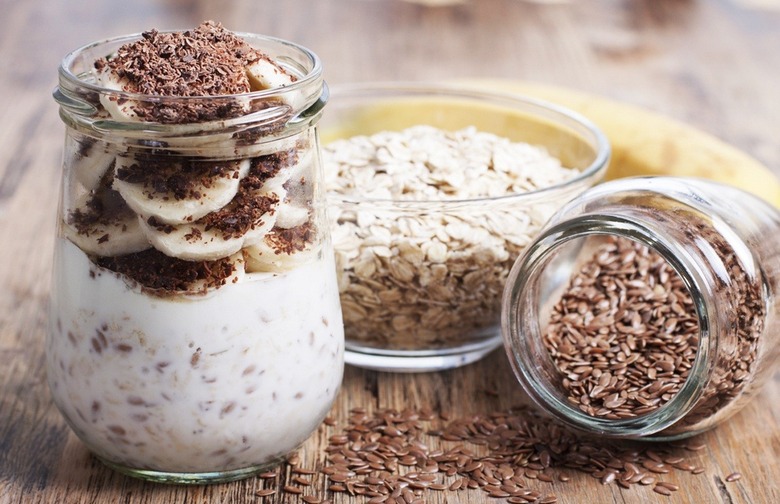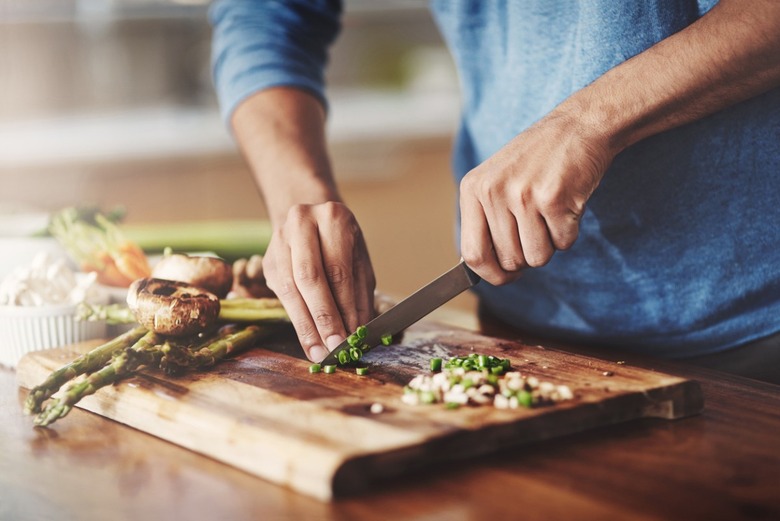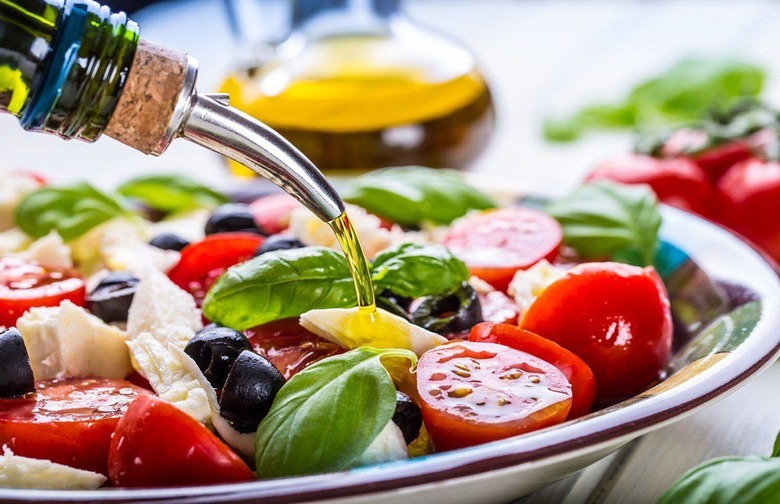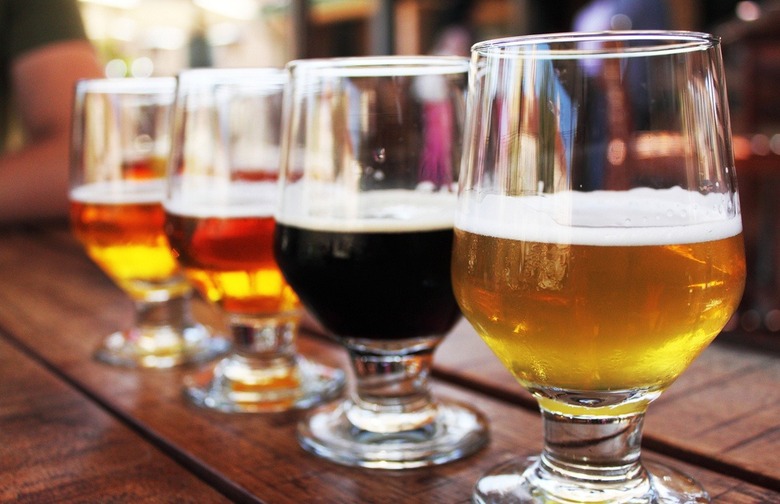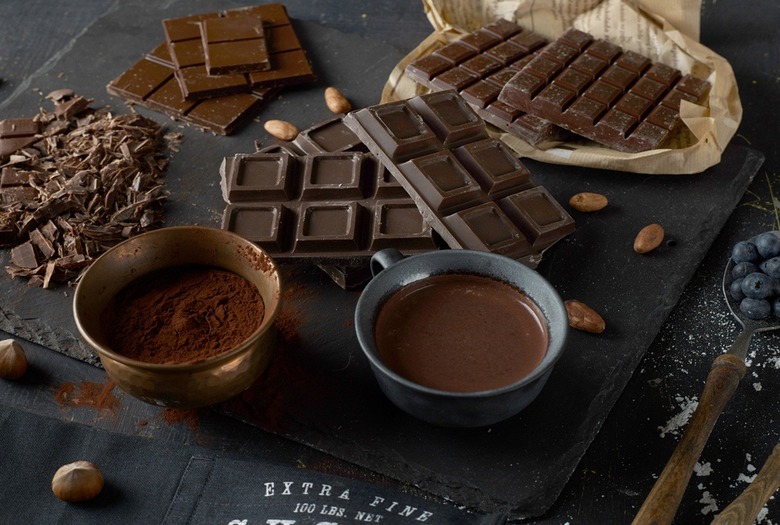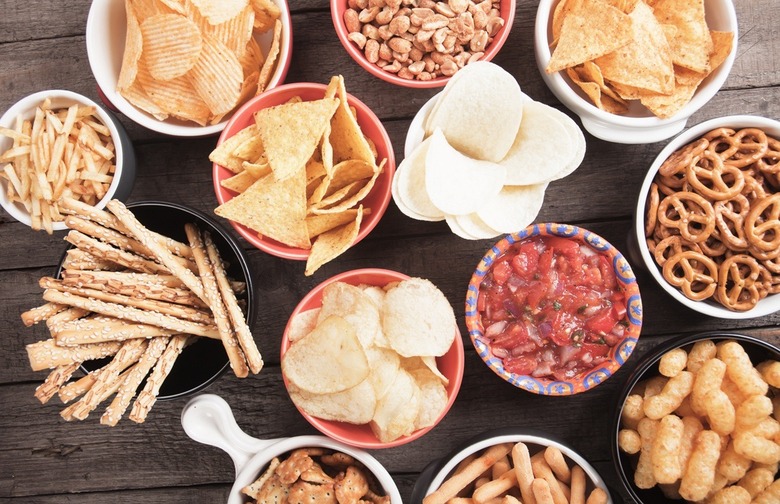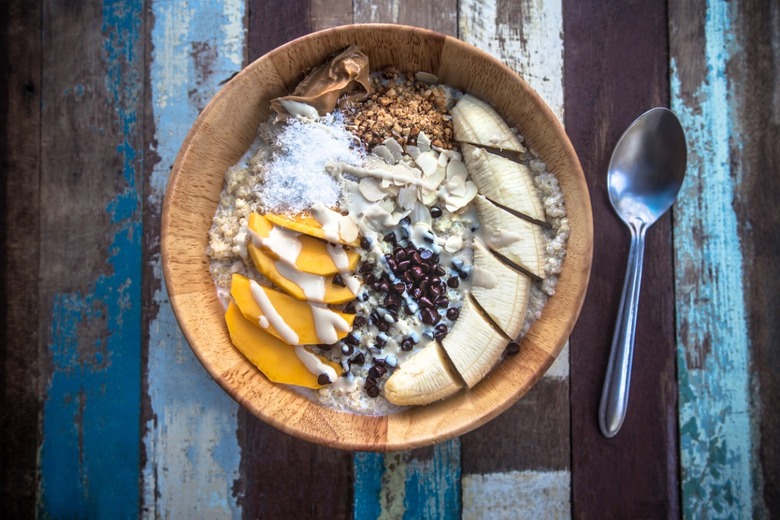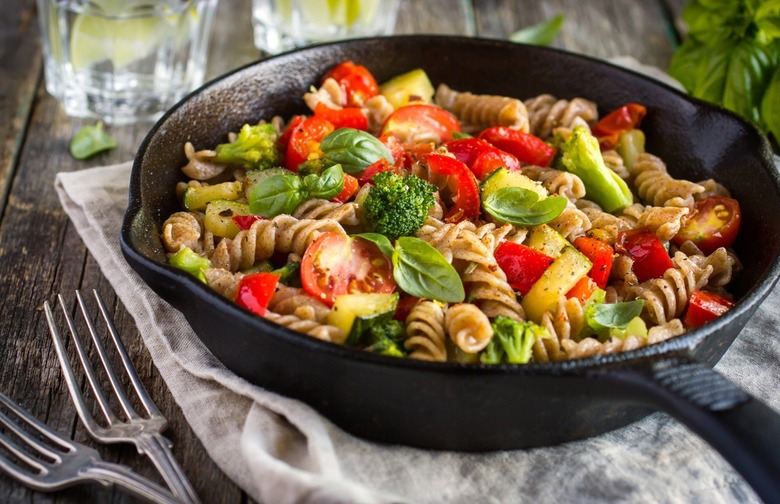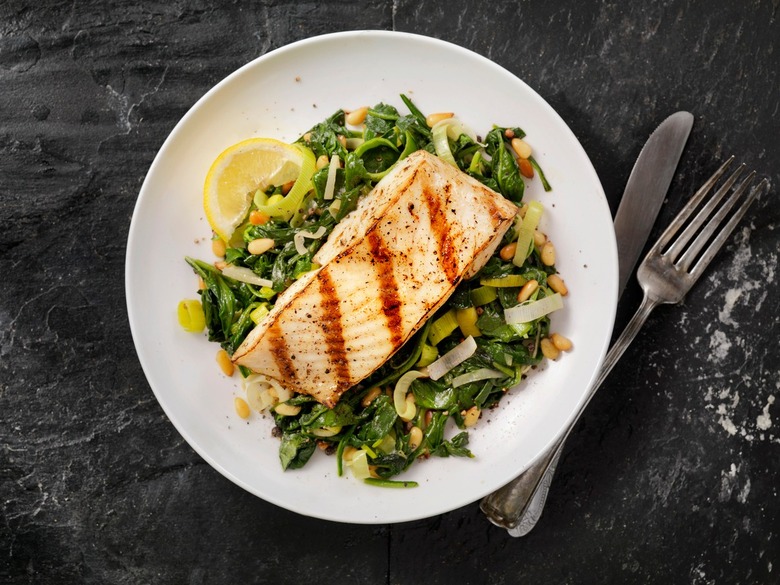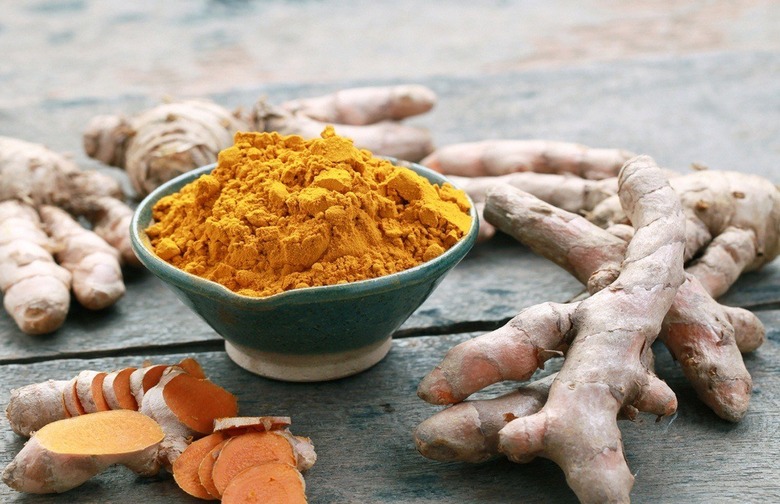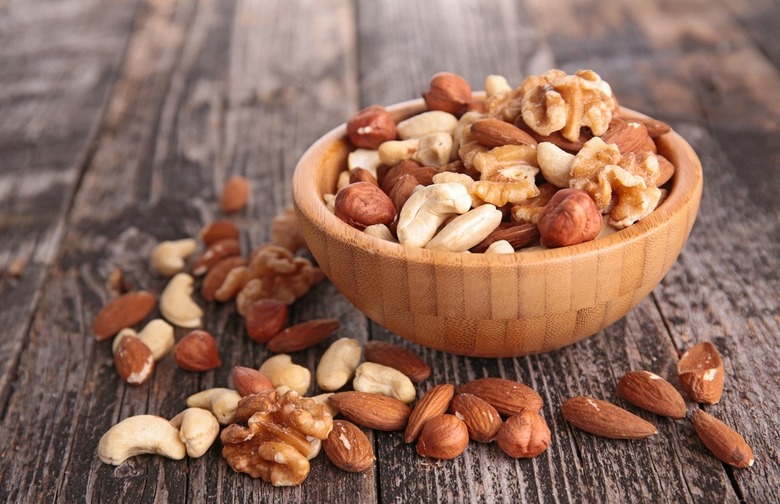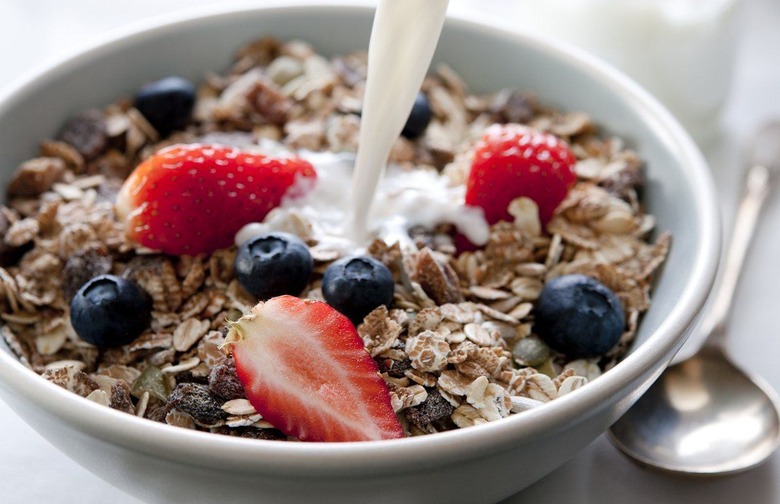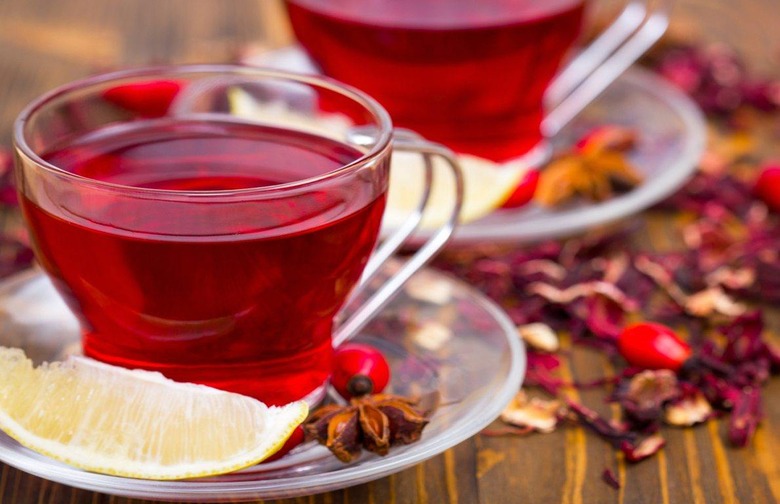14 Eating Habits To Lower Your Blood Pressure Gallery
We've all had our biceps strapped up to a blood pressure meter (technically called a sphygmomanometer) at the doctor's office. These machines calculate the force of your blood pressing up against your blood vessel walls. When the two numbers it records — blood pressure is measured both when the heart beats and when it is at rest — are high, it means your heart needs to use more force to pump blood through your body. High blood pressure is dangerous because it puts more wear and tear on your heart.
Hearing the words "high blood pressure" in any context is unnerving. The link between high blood pressure (often referred to as hypertension) and heart attacks is undeniable, and cardiovascular disease remains the leading cause of death in the United States. According to the American Heart Association, more than 100 million Americans have high blood pressure, and 1 million adults are expected to have a heart attack or die due to heart disease in 2018.
Genetics play a major role in whether a person will develop hypertension, but so do lifestyle choices. Smoking, lack of exercise, and poor eating habits can all increase the risk of high blood pressure. But thankfully, your habits can also reduce blood pressure levels, so long as you practice the right ones.
Paying attention to your diet is one way to combat high blood pressure. While anyone who is serious about minimizing the risk of cardiovascular disease must reduce sodium intake and limit alcohol consumption, other dietary measures — such as eating low-fat dairy products, cashews, and olive oil — also play a role. Here are 14 eating habits to lower your blood pressure.
Add some flaxseed to breakfast
Flax seeds contain alpha-linolenic acid, lignans, peptides, and fiber — four compounds that play a role in reducing blood pressure. A review of 15 clinical trials showed people who consumed just one to two ounces of flaxseed saw a three-point decrease in systolic blood pressure (the upper number) and a two-point decrease in diastolic (the lower number). For convenience, simply throw some flaxseeds into overnight oats, smoothies, or breakfast muffins. Just don't eat them before your workout — that might not end well.
Cook more meals at home
While restaurant food isn't always bad for you, it does tend to have lots of sodium. You can cut back on sodium simply by cooking meals at home, where you can salt your food moderately and prevent from going overboard. Cooking doesn't have to be complicated. These weeknight dinner recipes, for instance, make cooking at home easy.
Dress salads, seafood, and vegetables with extra virgin olive oil
There's a reason some of the healthiest eating habits in the world have an emphasis on olive oil. Whether you cook with it or dip your bread in it, olive oil provides your body with healthy fats it needs. A growing body of research links the polyunsaturated fats and polyphenols in olive oil to cardiovascular benefits and a reduced dependence on blood pressure medications. A study out of the Archives of Internal Medicine concluded that "the daily use of olive oil, about 40 grams per day, markedly reduces the dosage of blood pressure medication by 50 percent in hypertensive patients on a previously stable drug dosage."
Drink alcohol in moderation
While a single glass of wine is probably fine — and could actually be good for you — drinking excessive amounts of alcohol is seriously harmful to your health. Drinking to intoxication will put a lot of unnecessary stress on your heart, according to the American Heart Association. The reason why alcohol leads to hypertension is still largely unknown, but it is believed to be associated with an imbalance of the central nervous system, a loss of relaxation due to inflammation, and a long list of other factors.
Drink less soda
There are a number of reasons you should cut back on soda — even the diet kind — but blood pressure is definitely one of them. Studies show that sugar-sweetened beverages such as soda and fruit juices had higher systolic blood pressure ratings, which could lead to adverse health effects in the long term. You could switch to sparkling water instead — but even then you may want to limit your intake.
Have dark chocolate for dessert
Instead of a bowl of ice cream or a sleeve of Oreos, your blood pressure would prefer you snack on a bar of dark chocolate. Chocolate with a cocoa content over 80 percent may lower blood pressure through inhibition of angiotensin-converting enzyme (ACE) — just like an ACE inhibitor you would get at the pharmacy. Angiotensin is a powerful chemical produced by the body that causes the muscles surrounding blood vessels to contract, which increases blood pressure.
Lower your sodium intake
But don't exclude salt completely. Although the Mayo Clinic, The American Heart Association, and the National Heart, Lung, and Blood Institute have all called for a reduction in sodium intake for people with high blood pressure, a study involving more than 130,000 participants has concluded that "low-salt diets in people with and without high blood pressure may actually increase the risk of cardiovascular disease and death compared to average salt consumption." In response to these findings, the American Heart Association has reaffirmed their position that 1,500 milligrams of salt daily — an amount easily surpassed by eating just one meal a day from Chipotle — is best for ideal heart health.
Eat a banana with breakfast
Diets high in sodium can be costly to your blood pressure. But even if you do eat a restaurant meal with insane amounts of salt, potassium can help. Potassium helps your body to deal with sodium without making as large of an impact on your blood pressure. And bananas have lots of potassium — along with other healthy nutrients such as fiber and folate.
Eat more whole grains
Research shows that eating whole grains is linked to a reduction in blood pressure. With so many delicious and unique whole grains available, adding some to your diet should be easy. Prep a quinoa salad for lunch or make a sandwich with whole wheat bread. Even pasta might help lower your blood pressure, so long as it's the whole grain kind.
Make fish for dinner once per week
You don't have to eat it at every meal, but diets supplemented with seafood can help you maintain a lower blood pressure. Studies show that people who ate fish had a lower heart rate and required lower doses of blood pressure medications than those who did not. Don't like canned tuna? Make something like a salmon dinner with vegetables or one of these seafood recipes that are so simple, anyone can cook them.
Season with turmeric
This Indian spice has been making headlines for its long list of health benefits, which include reductions in joint pain, stomach pain, heartburn, and skin inflammation. But turmeric is also being tapped as a remedy for high blood pressure. The main active ingredient in turmeric is curcumin, which has been shown in human studies to decrease blood pressure, especially for patients with some forms of kidney disease. Try blending turmeric into smoothies and juices or use it in your favorite recipe for curry.
Snack on cashews and almonds
Unlike other nuts, cashews and almonds contain high quantities of magnesium, an essential mineral that helps regulate blood pressure. A lack of magnesium is correlated with high blood pressure. Make a tasty trail mix to snack on the go, or sprinkle some nuts on top of your oatmeal. Another option is to add some almond butter to a smoothie for a healthy, filling breakfast.
Stick with low-fat dairy products
There's a connection between eating low-fat dairy products (especially yogurt) and a reduced risk of hypertension, which scientists believe could be linked to calcium content or unique peptide compounds that are released during digestion. High-fat dairy products don't have the same effect — possibly because of their saturated fat content.
Swap out coffee for hibiscus tea
Caffeine has long been cited as a catalyst for high blood pressure, so that morning (and afternoon) cup of coffee might be affecting your heart health. To reverse these effects, swap it out for a more soothing mug of hibiscus tea. A 2010 study showed that drinking three daily servings of hibiscus tea over a six-week period resulted in a reduction in blood pressure in people with mild hypertension. Of course, hibiscus tea isn't the only drink you can swap in. Try one of these healthier alternatives to your morning cup of joe.
More from The Daily Meal:
19 Foods and Drinks That Are Putting Your Blood Pressure Through the Roof
Unexpected Signs of an Unhealthy Heart
These 15 'Rich' Foods Are Actually Good for Your Cholesterol Count

